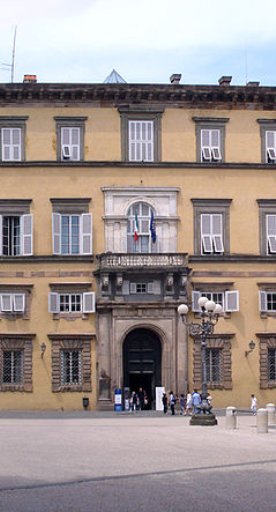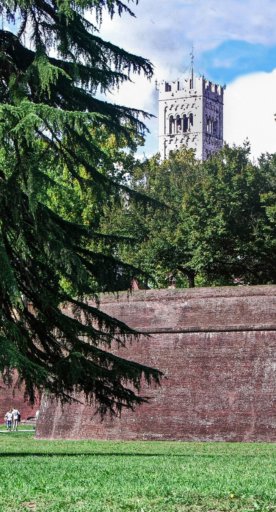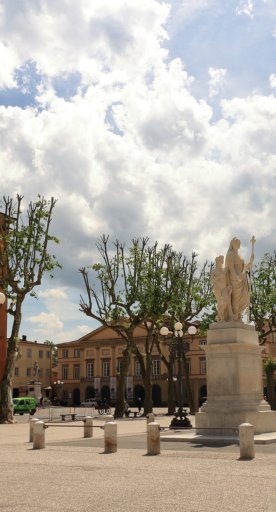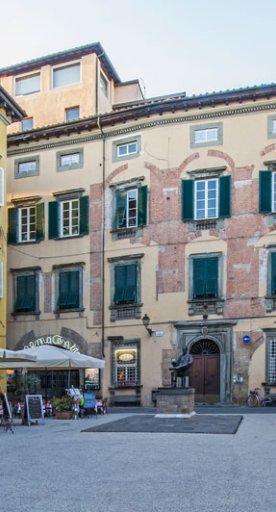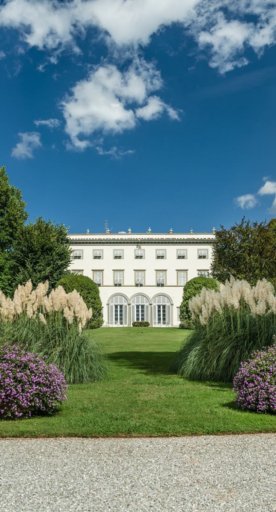San Giorgio in Brancoli
A Romanesque gem in the hilly area of Brancoleria, the valley of the Vinchiana torrent
The pieve of San Giorgio in Brancoli is a church situated in the homonymous area in the Piana di Lucca, on the sides of the Pizzorne Massif. This sacred building is a masterpiece of Romanesque art and stands out for the large number of works it houses.
Mentioned since 772, it is indicated as an independent pieve in the second half of the 11th century, when the entire area, the Brancoleria, grows both demographically and in importance.
At the time, thanks to the interest of the then Bishop Anselmo da Baggio, who will later become Pope Alexander II, and to the investments of Matilde di Canossa, who used to reside in the area, the work began to build the church we know today.
The structure is composed of marble blocks that form the simple façade, partially covered by the crenellated bell-tower characterised by single-light and two-light windows. The interior features three naves supported by columns, with capitals that support round arches. Small single-light windows provide lighting.
There are many valuable works inside. The finely decorated octagonal baptismal font dates back to the 12th century. The ambon, a raised platform from where the readings are proclaimed, is dated 1194 and work of the maestro Guidetto; it has a square plan with Corinthian columns that support it and sculpted lions. Two sculptures date to the 11th century: the altar with six small columns and human figure at the centre and the holy water font with plant decorations and animal protomes, which have unfortunately been stolen. On the right wall there is a 15th-century glazed terracotta work with San Giorgio, the dragon and the princess, attributed to Andrea della Robbia. Above the altar, there is a large wooden cross of the 13th century of the Berlinghieri School while the stone tabernacle is from the Renaissance period. There are no more frescoes on the walls; they have been lost, except for an Annunciation by Giuliano di Simone, of the late 14th century. On the outside, on the lintel of the south side portal, is the Brancolino, a bas-relief of a small stylised man, whose function is still shrouded in mystery.
The Pieve can be visited thanks to the local volunteers who have made themselves available to preserve and make accessible this monument that is rich in art history and symbol of the area.

